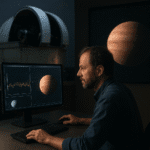Black holes have become focal points for understanding the most extreme phenomena in the universe. These objects, predicted by Einstein’s theory of general relativity, challenge our ideas of time, space, and matter. From the formation of galaxies to the fundamental laws governing particles, black holes occupy a central role in modern astrophysics. In this article, we explore their origins, their anatomy, how we observe them, their impact on cosmic evolution, and the frontiers of research that promise to unlock new insights into the fabric of reality.
Origin and Formation of Black Holes
The life cycle of stars dictates how black holes come into being. When a massive star exhausts its nuclear fuel, it undergoes a catastrophic collapse under its own gravity. In this implosion, the core’s pressure and temperature rise dramatically until no known force can counteract the inward pull. At this point, the star’s core collapses into a point of infinite density known as a singularity. Surrounding this core, the outer layers may be expelled in a supernova explosion, scattering heavy elements across space and sowing the seeds for future star systems.
Not all stellar remnants become black holes. Stars with masses below approximately three times that of our Sun typically end up as neutron stars or white dwarfs, where degeneracy pressure halts the collapse. However, when the progenitor star’s mass exceeds this threshold, the collapse continues until a black hole forms. Beyond these “stellar” black holes, there exist far more massive variants that arise from different processes. In the early universe or within dense star clusters, runaway mergers of stars and compact objects can lead to the birth of supermassive black holes at the centers of galaxies, some weighing billions of times more than the Sun.
The Anatomy: Inside an Enigma
Black holes are deceptively simple in theory but enormously complex in practice. They are defined by just a few parameters—mass, charge, and spin—but they warp the surrounding spacetime in profound ways. The boundary beyond which nothing can return is called the event horizon. It represents the point of no return: any particle or photon crossing this boundary will inexorably fall toward the singularity.
Outside the event horizon lies the ergosphere in rotating black holes, a region where space itself drags along with the spin of the object. Within this zone, particles can gain energy and escape with more energy than they entered, a process known as the Penrose mechanism. Closer to the singularity, traditional physics breaks down, and quantum effects become crucial. The interplay between general relativity and quantum mechanics at this juncture remains one of the greatest unsolved problems in theoretical physics.
Peering into Darkness: Observational Techniques
Observing black holes directly is impossible since they emit no light. Instead, astronomers infer their presence through indirect signatures and advanced instrumentation. Accretion disks—streams of gas and dust spiraling into a black hole—heat up to millions of degrees and emit intense X-rays detectable by space-based telescopes. Jets of high-energy particles can also form along the rotational axes, visible in radio and gamma-ray wavelengths.
- Event Horizon Telescope: By linking radio dishes worldwide, scientists produced the first image of a black hole’s shadow, revealing the silhouette of the supermassive object at the center of galaxy M87.
- Gravitational Wave Detectors: Instruments like LIGO and Virgo measure ripples in spacetime generated by collisions of black holes, opening a new window into the universe.
- X-ray Observatories: Satellites such as Chandra and XMM-Newton track the high-energy glow of accreting material.
By combining these methods, researchers can estimate black hole masses, spins, and the dynamics of their surrounding environment. Continuous technological advances promise ever more precise measurements, bringing hidden features into view.
The Role in Galactic Evolution
Black holes are not just exotic laboratories for fundamental physics; they also shape the structure and fate of galaxies. In active galactic nuclei (AGN), supermassive black holes accrete matter at high rates, releasing enormous energy that can influence star formation on galactic scales. Powerful outflows and jets can heat interstellar gas, preventing it from cooling and collapsing into new stars, a process termed “feedback.”
This feedback regulates the growth of galaxies, helping to explain observed correlations such as the M–sigma relation between black hole mass and the velocity dispersion of stars in a galactic bulge. Without these self-regulating mechanisms, galaxies would likely evolve in ways inconsistent with astronomical surveys. Furthermore, merging galaxies often host binary black holes that eventually coalesce, emitting bursts of gravitational waves and contributing to the hierarchical growth of cosmic structures.
Cutting-edge Research and Future Prospects
The study of black holes stands at the crossroads of observation, theory, and experiment. Physicists are developing frameworks like string theory and loop quantum gravity to reconcile the singularity with quantum principles. Meanwhile, observational campaigns plan to enhance the Event Horizon Telescope with more stations, achieving finer resolution and dynamic imaging of black hole environments.
Gravitational wave astronomy is rapidly expanding, with next-generation detectors such as the Einstein Telescope and LISA (Laser Interferometer Space Antenna) set to probe lower frequencies and detect black hole mergers at cosmological distances. These facilities will deepen our understanding of black hole demographics and test the limits of general relativity under extreme conditions.
On the theoretical side, investigations into Hawking radiation aim to confirm that black holes radiate particles due to quantum effects near the event horizon, leading to their eventual evaporation over astronomical timescales. Detecting this radiation remains a formidable challenge, but analog experiments in laboratories using ultracold atoms or optical systems are seeking measurable signatures.
By combining powerful telescopes, gravitational wave observatories, and innovative experiments, the coming decades promise to transform black holes from cosmic curiosities into windows onto the deepest laws of nature.










